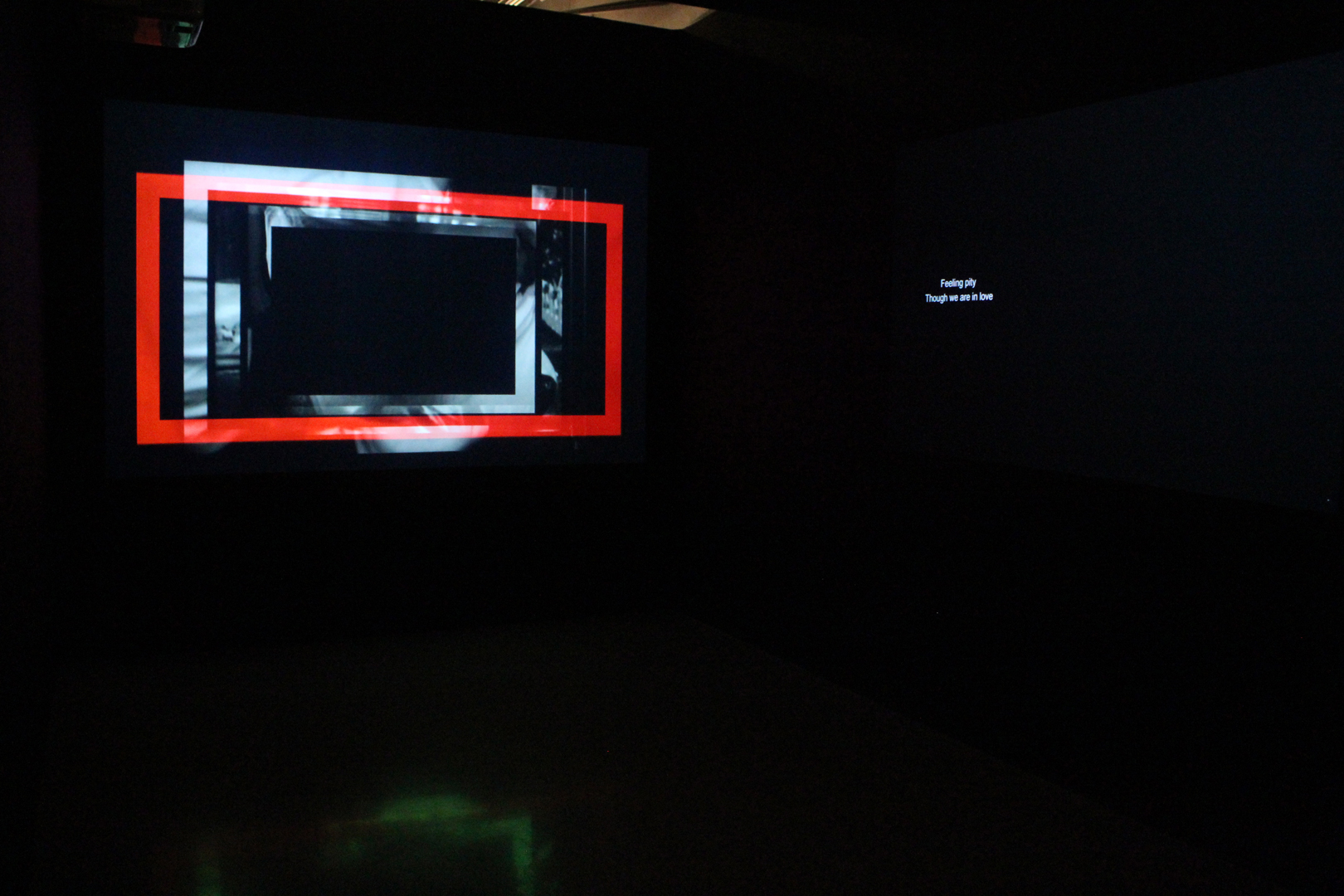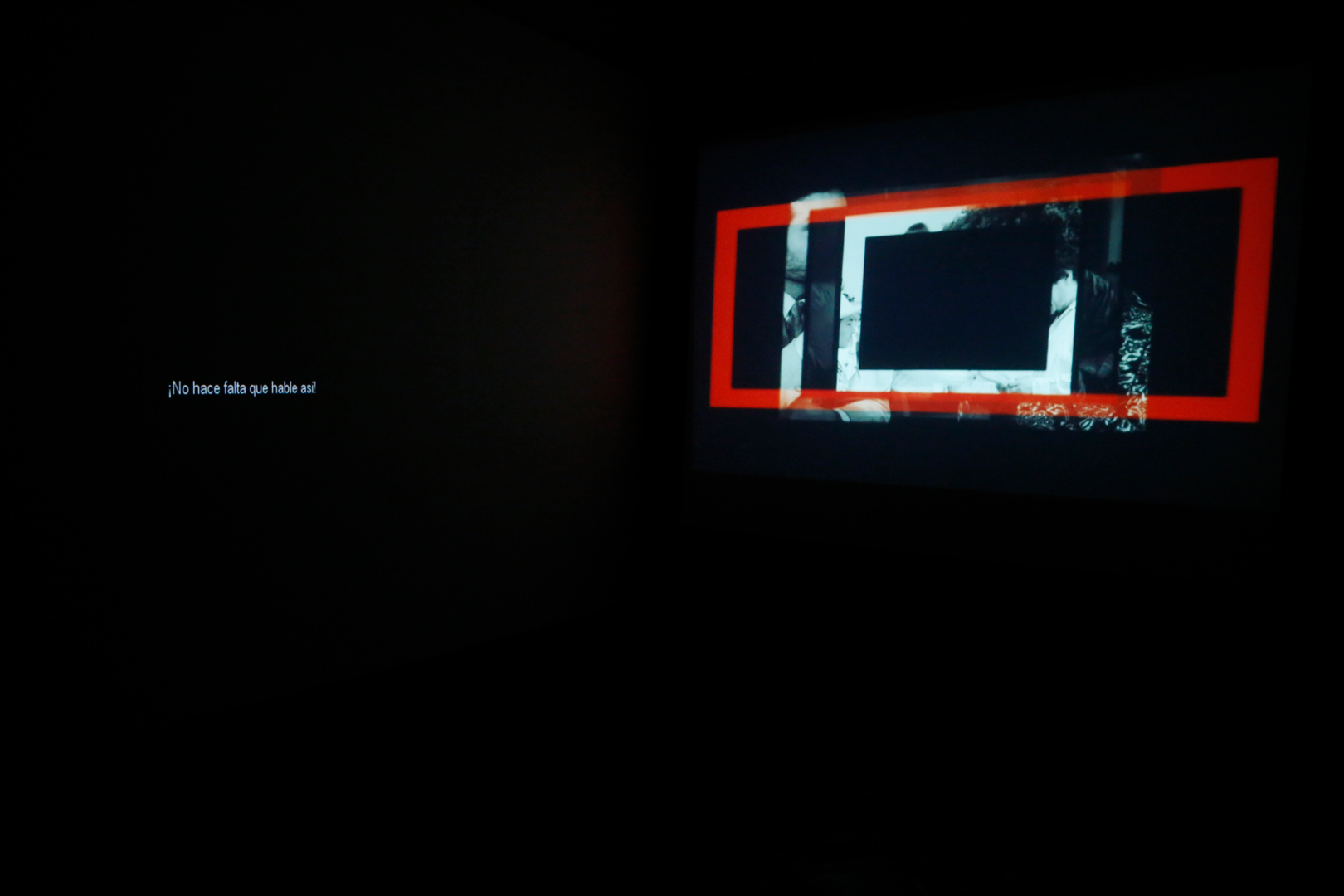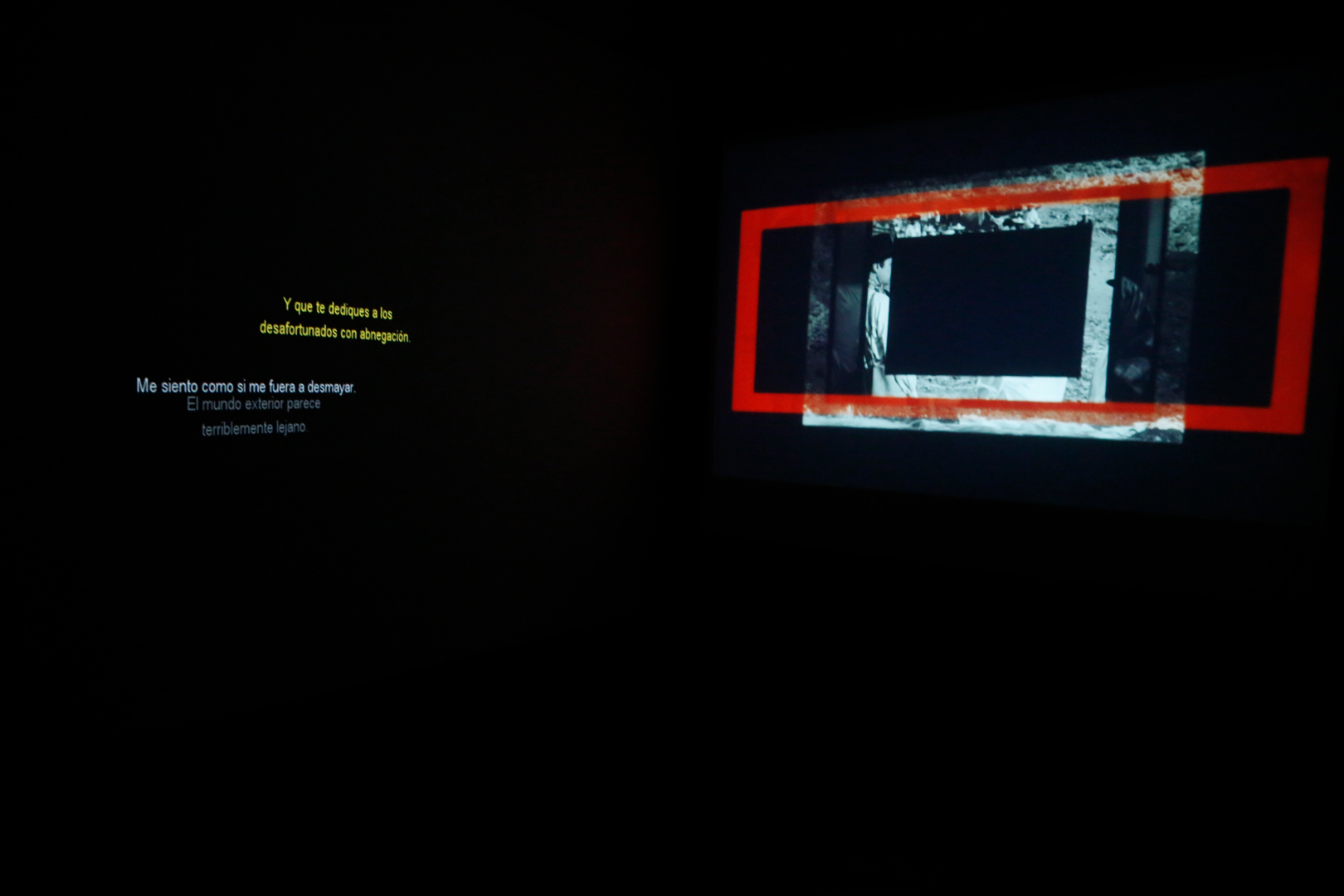Annabel Castro: Outside In: Exile At Home
Artist(s):
Title:
- Outside In: Exile At Home
Exhibition:
Category:
Artist Statement:
Summary
Installation that utilizes machine learning to reflect on systematic discrimination by focusing on the indefinite detention of Mexicans with Japanese heritage concentrated in Morelos during WWII. This algorithmic discrimination system tears apart four classic fiction films continuously within a projection room. Fragmentation and segregation is decided using machine learning algorithms.
Abstract
Outside-in is an installation that utilizes machine learning to reflect on systematic discrimination by focusing on the indefinite detention of Mexicans with Japanese heritage concentrated in Morelos during WWII. This algorithmic discrimination system tears apart four classic fiction films continuously within a projection room. The fragments are displaced and classified using machine learning algorithms. The system selects, separates, reassembles and displaces the fragments into new orders. The new orders, edited in realtime, are displayed in two perpendicular projections (one for the moving images, another for subtitles) and on a third wall the edited sound components are output through a row of head phones. It evokes the condition of being robbed of your right to be in the place to which you belong. The citizens detained during WWII were removed from their residence, their belongings were confiscated and they were placed in seclusion solely for having Japanese ancestry. Similarly, at present, data retrieving companies configure low resolution representations of ourselves from the snatched digital debris of our daily life. These pieces are reconfigured into archetypes and meaning is attached to them for massive decision making. We don’t have the right or means to know what these representations look like or what meaning has been attached to such shapes. It is a privilege reserved to the designers of algorithmic processes: they own this right and we the citizens own the consequences.
Technical Information:
The installation includes 2 video projections arranged perpendicularly in a room with a row of 4 headphones on the wall. One projection presents the outskirts of the 4 distinct films; the other displays their subtitles. The headphones play material extracted from the films soundtracks. The elements of each movie (soundtrack, image, subtitles) are no longer synchronized, each leads a separate life in company of dismembered elements of the other films. All elements are edited through real time algorithmic discrimination processes. These processes use machine learning algorithms that select, separate and re-ensemble fragments from the source films. The walls need to be mate black and preferably not close to artwork with continuos sound.
Process Information:
The artwork gives visibility to a discrimination process occurring in Mexico mainly unknown to us and still in need of reparation. This kind of discriminatory process takes place through the use of machine learning tools causing us to deal legally with the consequences of these fictions without having the right to know anything about them or how they were fabricated. Outside-in confronts legal concepts of identity and manipulation by massive media integrating the disintegration of film, text and sound, thus highlighting this injustice.
The biggest challenge for this project was to address these events without promoting a view of Japanese heritage citizens as being different from the rest of the citizens. That is the reason why the artwork is constructed from well-known classic fiction movies, recognizably fiction, to contextualize the groundless conspiracy suspicion in the realm of fiction crafting. We can all be fictionalized and turned into a sign of something totally outside ourselves.
Other Information:
Inspiration Behind the Project
My interest in Japanese migration began with a project I had previously developed called Sonorous Phytography for Ciudad Okinawa, related to the establishment of Okinawans in Santa Cruz Bolivia. As a result of the 1945 Okinawa Battle and subsequent US military occupation, many Okinawan felt the need to migrate, thus bloomed in Santa Cruz a new component of Bolivian culture. Working on this project I was inspired to learn about my own country’s relation to these events. To my surprise I learned that during WWII Mexican citizens had been detained, removed from their residence and placed in seclusion with their belongings confiscated, solely for having Japanese ancestry. The large majority of our citizens ignore that these events took place: they are not a part of our official history books. In fact, even in specialized journals very little has been published about this in Mexico.
A key motivation for Outside in: exile at home is to provoke reflection on these events. Mexican citizens with Japanese Heritage are part of who we are as Mexicans. Our Japanese heritage citizens are as Mexicans as all of us Mexican citizens. Genetic detail is not a rightful cause for the dissolution of civil rights. A single data point (ancestry) was used to massively decide who was a potential threat to national safety. The method is still valid in the US: on January 5th 2020, the New York Times reported: “Dozens of Iranians and Iranian-Americans were held for hours at Washington State’s border with Canada over the weekend as the Department of Homeland Security ramped up security at border ports after Iran threatened to retaliate against the United States for the strike that killed its top military leader”. In this case citizens were detained unrightfully for hours but the US has a legal framework for unjustified detention lasting an indefinite number of years. Reflecting on this historical moment in Mexico where systematic discrimination took place caused by the pressure of an international conflict is indispensable, even more so now that the pandemic has submerged us in a worldwide state of emergency.
In our contemporary scenario machine learning tools make possible massive discrimination processes. Aided by machine learning, data retrieving companies configure low-resolution representations of ourselves from the snatched digital debris of our daily life. These pieces are reconfigured into archetypes and meaning is attached to them for massive decision making. These images have been propagated massively and arrive before us to loan granters, insurance companies and legal systems, among others. We don’t have the right or means to know what these representations of ourselves look like or what meaning has been attached to such shapes. It is a privilege reserved to the designers of algorithmic processes: they own this right and we the citizens own the consequences of this by-product face assigned to us, as in the case of the Mexicans with Japanese heritage interned at the Hacienda de Temixco in Morelos, Mexico during WWII.







